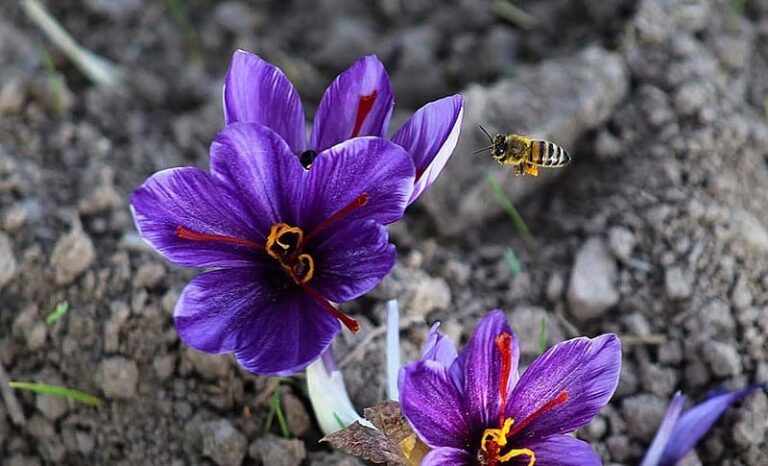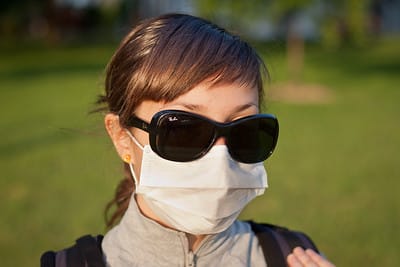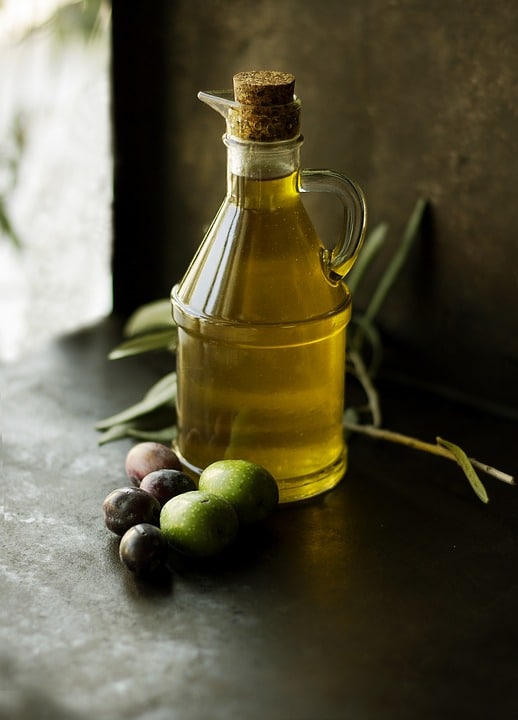
Ritucharya (seasonal guidelines for good health ) and Dinacharya (daily living guidelines) are two cornerstones of health as per Ayurveda. The Indian knowledge systems have divided the year into six different seasons of two months each. Due to the movement of the Sun through the year, the different parts of Earth experience the different seasons ( also called Ritu) In each season or Ritu, the environmental factors impact our bodies in different ways. Therefore for each season Ayurvedic acharyas have given us clear guidelines that cover daily regimen, food and drink, exercise, Abhyanga, clothing, places to go to or avoid , gems , flowers, fragrances & accessories that can be used etc. By following these Ritucharya rules, we can prevent diseases due to seasonal weather changes and maintain good health through the year. Many lifestyle disorders can be controlled with sincere implementation of Dinacharya and Ritucharya guidelines. For example, did you know our bodies are at their weakest during the hot summer (greeshma ritu) season ? Therefore we should avoid vigorous exercise during this seaoson and beginners should avoid starting a new exercise routine during summers Why is Ayurvedic Ritucharya so important? Why does following seasonal guidelines help improve our health and sense of well being? In this guide, we will also the answers. We will also share the detailed instructions for each season , based on Authentic Ayurvedic references. Adana Kala vs Visarga Kala: An Ayurvedic concept: Depending upon the movement of the Sun, the Ayurvedic Acharyas have divided the year into 2 parts of 6 months each. Each of these 6 month periods have 3 seasons of 2 months each. Hence we experience 6 seasons according to Ayurevda: each lasting 2 months. 3 seasons fall in Adana Kala and 3 seasons fall into Visarga Kala. Shishira (late […]

What are the benefits of Kumkumadi tailam ? What are some of the ingredients used in this classical Ayurvedic formulation? how to use kumkumadi oil? Could there be any side effects if we use the product on the wrong skin type? These are some of the questions we have attempted to answer in this authoritative guide that helps you decode the many many benefits of kumkumadi tailam. This post aims to give you authentic information to help you understand if this is the right ayurvedic skin serum for you, and how to craft a good skin care routne with this product. This blog post has been written to answer the questions asked commonly by Krya’s customers – we seek to demystify and explain the big picture behind Kumkumadi tailam. This post will explain the history behind this formulation, the dravyas that go into it, who it suits, and what conditions it is not suitable for. It will end with a brief piece on 2 of the new Krya facial oil serums which are excellent options to consider when you seek an ayurvedic facial oil / ayurvedic facial serum. What is Kumkumadi Tailam? Who formulated it and for what condition? Kumkumadi tailam is an ancient, classical ayurvedic skin oil formulation that is now gaining popularity among many companies which promote luxurious Ayurveda. This formulation is being marketed as an ultimate, all-purpose Ayurvedic skin oil to solve ALL skin problems. Costs of this product are also going through the roof, with some companies selling 12 ml for close to Rs.2500 (around 2 lakh rupees per liter!) This post aims to cut through this hype and educate about the real benefits of Kumkumadi tailam and who should be using it. Read on. In classical Ayurveda, many hoary formulations exist which according to Indic […]
The abhyanga is a powerful Dinacharya that gives us good health and well being. When done regularly it helps improve strength, balance aggravated doshas and also improves skin health and hair health. However, as we have seen, Ayurveda also advises following Ritucharya practices. These are changes / modifications to food habits and daily practices in each season. In today’s post we will look at the abhyanga modification to be done for Spring (Vasanta Ritu). In our earlier post on Vasanta Ritucharya, we have covered why a change in habits is required in this season. In Spring (Vasanta Ritu), just like ice melts in the Mountain tops due to the presence of the sun, the Sun’s movement helps melt accumulated Kapha in our bodies too. As this Kapha beings to circulate in the body, we experience a surfeit of mucous related issues like colds, runny noses, hay fever, etc. Particularly if we did not follow the Ritucharya rule in Winter about putting accumulated Kapha to work through intensive exercise, we will have to deal with aggravated Kapha in spring. The presence of this liquid Kapha in the body creates a few challenges to the practice of abhyanga in spring. As there is more Kapha circulating in the body, there is a resistance to oil absorption. Also, as Kapha tends to increase heaviness and stiffness in the body, we must be VERY careful during Abhyanga NOT to contribute further to this feeling of “gurutva” or heaviness and stiffness in the body. Abhyanga Contraindications : Before we get into the post on the abhyanga modification to be done in spring, here are some basic precautions to follow while attempting this Dinacharya. Do NOT do Abhyanga is you are pregnant or are menstruating Do NOT do Abhyanga if you are tired, have had low […]
The Abhyanga is a key Dinacharya, daily practice recommended in Ayurveda to impart Bala (strength), Ayush (health and Immunity) and Ayu (long life) to the body. This practice forms an important part of Krya’s recommendations to improve hair growth, impart better strength and texture to hair and to also improve the quality, tone and texture of skin. An abhyanga is also a very important Dincharya that is recommended for specific cases of hairfall like post partum hairfall, hairfall due to sudden and extreme weight loss (cases of high vata aggravation). Many Krya consumers have found a HUGE difference to their hair health, skin texture and overall well being and immunity when abhyanga is added to their daily routine. The practice of abhyanga is mentioned as a health giving practice in all the Ayurvedic Samhitas. In today’s post, we will analyse the abhyanga shloka in Ashtanga Hridayam’s Dinacharya chapter and see why Acharya Vagbhatta says this is such an important and useful practice. Ashtanga Hridayam: part of the Brhat Trayee Texts in Ayurveda We have written often about how empowering Ayurveda is as a Vaidya shastra. Ayurveda is considered an UpaVeda, an offshoot of the vedas themselves and is found in the Atharva Veda. This Upa Veda is a Divine Science which has been handed down from the Devas to the Raja Rishis. It was then passed down in oral tradition until it was compiled about 3000 – 4000 years ago by Agnivesa. Agnivesa’s Samhita, was then further redacted by Charaka. Charaka’s redaction of Agnivesa Samhita became much more famous than the original, and soon everyone began to refer to Charaka’s redaction as the Charaka Samhita. Charaka Samhita forms the first of the Brhita Trayee. The second text in the Brihat Trayee is Sushruta Samhita. The Sushruta Samhita concentrates more on […]

According to Ayurvedic seasonal guidelines, Vasanta / spring is now here – so we must all be following Vasanta Ritucharya – modified seasonal guidelines for Spring. If you have already begun to sniffle, sneeze and look desperately for tissues, this season change may have already caught you unawares. One of the most powerful concepts in Ayurveda medicine is the concept of Ritucharya – seasonal regimens to be followed to naturally balance the changes in your doshas due to the change in climate and season. As we have seen in other posts on Ritucharya and Dinacharya, following daily living guidelines or Dinacharya and adjusting these guidelines in every season, or Ritucharya are 2 key ayurvedic cornerstones to good health. When we regularly follow the guidelines of Dinacharya and Ritucharya and also ensure that our choice of Ahara (food) and the way we prepare and eat this food is according to our prakriti, we ensure we are in a state of harmony and balance. This is the Ayurvedic concept of preventive health care. Ayurveda: unique concept of preventive health care Ayurveda’s goal is to prevent the formation of disease by following certain guidelines of good living. This is best described by Acharya Charaka in his Sutra Sthana shlokas: “Swasthasya Swasthya Rakshanam Aaturasya Vikara Prashamanam Cha” He explains that the goal of medicine (Ayurveda) is to rejuvenate and preserve the health of the healthy and then to alleviate diseases in the ill. This order of first tending to the healthy and then treating the sick is specific to Ayurveda. It explains why so much of Ayurveda is primarily focused on health giving regimens rather than disease treatment . This emphasis on preserving health is why Dincharya and Ritucharya regimes (regimes for daily living and special regimes to follow in specific seasons) come first […]
Due to the high use of electronic devices, and excessive eye engagement, many of us commonly face eye strain & eye fatigue. We have recently been receiving a lot of queries on tackling eye fatigue and improving vision through Ayurveda. So we have re-written and expanded one of our earlier posts on this subject. This post will explore how you can easily & visibly reduce eye fatigue & eye strain with Ayurveda . Do you have eye strain? Do you constantly feel eye fatigue? Do you develop headaches after a long bout at your computer? Are you experiencing premature greying and hair dryness? Do your eyes feel dry, scratchy and itchy? You could be experiencing computer vision syndrome / computer related eye strain. Eye strain is a real and wide-spread problem today, which affects both children and adults. For several hours every day, we stare at electronic screens across phones, tablet, TV and computers. As we continually use our eyes for subtle / sookshma purposes, we strain the minute eye muscles and do not allow them a chance to recover or relax. So we are all affected with eye strain to varying degrees. The symptoms are blurred vision, double vision, dry eyes, headaches, eye pain, neck strain, eye-irritation and eye watering. The factors that induce eye strain are the number of hours of screen-time, the size of the screen, the strength of your vision, light levels and posture. Causes for Eye Strain as per Ayurveda : It is astonishing that our ancient Ayurvedic texts are able to give us a rationale behind a seemingly modern problem. Acharya Sushruta tells us that all Netra Rogas (diseases of the eye), occur due to the following causes: Imbalance of hot and cold ( Ushnabhitaptasya) leading to eye strain When the body heat […]

Parents frequently write to us at Krya asking if using olive oil for baby massage is a good practice and what Ayurveda feels about this. With our worlds being opened up everyday and many of us being seasoned travelers, we come across many new, exciting plant oils and butters from around the world. All of them come with excellent nutritional benefits, and seem like they would be very good for skin. So how do we decide which oil to use while giving our baby a massage? To choose the right oil, we must first understand WHY we are asked to give baby a regular abhyanga-snana or oil massage followed by the bath by Ayurveda. Benefits of a regular baby abhyanga / baby oil massage: Ayurveda advises that we give baby a regular Abhyanga with special medicated oils and then follow it with an ayurvedic snana that is performed with special Ayurvedic herbs. The Abhyanga is to be done until the child is atleast 1 year of age, or even older. At each stage of the child’s life, the Abhyanga gives special benefits to the child. In the first 3 months of the child’s life, the Abhyanga helps remove aches and pains from the ordeal of childbirth. It builds additional immunity to the child’s body through the use of special ayurvedic herbs. It also helps the development of the child’s sensory organs and helps create a loving bond between the Mother and the child. As the child begins to turn, hold its neck in position, crawl, etc, the Abhyanga lends strength and aids the correct development of the child’s musculo-skeletal system. When special Ayurvedic oils that have been processed via Tila Paka method are used, the herbs are able to enter the child’s body through the skin via […]
Artificial Intelligence & machine learning in non-human systems is an accepted reality now. If it seems incredible that some human jobs could be replaced by AI, then even more incredible is natural intelligence, which is all around us but often not appreciated. An excellent example of natural intelligence is the interaction of a good Ayurvedic Ubtan or bodywash with your skin. Natural Intelligence for your Skin In the Ayurvedic system, a herb & grain based powder is the ideal recommendation to cleanse skin correctly. for clean, healthy and radiant skin. (they also recommend that you regularly apply a good skin oil pre-bath to balance aggravated doshas and nourish the skin) All the natural orifices of the body like the ears , eyes , nose, axillia, genital organs , skin pores (sweat) and scalp secrete waste material called “mala” , throughout the day and night. If this “mala” is not removed properly, the body loses its health and appearance of well being. This is one very important reason why a “Snana” is recommended as the first act of the day and is considered to be very beneficial. The 3-Level cleansing process of a Ubtan & Body-wash Powder Soaps use a purely surfactant method of dissolving all the oils and dirt on the surface of your skin , which are then removed as you pour water. The Krya Ubtans & Body-wash powders work by combination of gentle exfoliation , natural surfactants and adsorption. The Ubtan powder is first made into a paste with water and then this herb paste is gently rubbed on the skin. This paste adsorbs excess oil, dead cells and dirt from your skin and then leaves it fresh and clean, as you pour water to wash off the mixture. Because of the powder format and the quality of […]
A pitta imbalance is responsible for many skin and hair conditions we see today like premature greying, hair thinning, heat rashes, acne, etc. Pitta imbalance is also the cause behind gastritis, GERD, IBS and high Blood Pressure. Whenever we see signs of dosha imbalance reflected in skin and hair, it makes sense to correct the diet so we do not further overload the body. When these diet modifications are adopted ALONG with good quality ayurvedic oils and choornas, and external products and Dinacharya practices are followed, we can see a good improvement in the skin and hair condition. It can also positively impact internal issues as well. Dravyas and Spices which are pitta channelizing: In the first part of this series on Balancing Pitta through food, we saw how introducing certain Rasas (tastes) into the food, helped balance aggravated Pitta dosha. Apart from this, aggravated Pitta always means that Agni is not channelized properly in the body. Aggravated Pitta dosha can travel and irritate other organ systems like skin, hair etc, as the Fire in the body is TOO high. Therefore, an important part of keeping Pitta in check is to channelise the flow of Fire (Agni) in the body. This makes the difference between an out of control forest fire which how aggravated Pitta dosha can be visualised vs a steadily burning , lamp , which represents Pitta in balance. Dravyas and spices that are pitta channelizing help rein in and control Agni, improving the ability of Pitta dosha to work in the body and enhance metabolism and nutrient extraction while eating. This is why reining in Pitta is very tricky – we cannot abruptly cool, freeze or totally bring down Pitta in the body as it is vital for digestion, metabolism , warmth and […]
As we had written in Part 1, , many Ayurvedic rules on eating for good health, do not go with modern notions on health and nutrition. In fact, they seem contrarian and sometimes weird or even “unscientific” as per modern and often western expectations. However, as I have always maintained, good health reflects in great skin and hair. At krya we get many queries every day on tackling skin & hair care problems, which cannot be solved with the just use of external products alone, so we do end up gently nudging people to take a second look at their diet and lifestyle. So here is part 2 of my post on eating sensibly according to Ayurveda. As with all new information, please read this with an open mind. IMPORTANT NOTE :This article does NOT discuss the ethical consideration behind these food choices as some of the Ayurvedic prescriptions use animal derived products. At this point of time, I am simply talking about how Ayurveda analyzes each food choice in terms of its dosha and how it would impact human health alone. 1. Ayurveda follows a holistic approach to eating. There is no measurement of micro nutrients or break up of food into the terms we measure today like protein, carbohydrates, vitamins, minerals etc. Instead, Ayurveda and all traditional medicine talks about eating a balanced meal. And is concerned about eating local and seasonal food that is right for each dosha type. This cannot be compressed into a simple diet chart but has to be worked out according to the needs of the individual, their current state of health and the environment they live in and the nature of their work, etc. So for example, the diet prescribed for me, a Pitta-kapha type would consist of foods that are cooling but […]
The practice of ayurvedic oiling , i.e using ayurvedic skin and hair oils is essential for maintaining skin and hair health. Regular ayurvedic oiling improves hair and skin health, helps restore and repair these organ systems, balances dosha imbalances and gives many other important health benefits for the body. Ayurveda also recommends the balanced consumption of “sneha” or oils & fats to keep the bones and joints in good working condition. Certain organs like the brain and the eyes are high in fat composition so the regular intake of good fats is recommended to keep these organs in good working order. Properties of different vegetable oils – as per Ayurveda Every vegetable oil / fat has a different quality as per traditional medicine. Cow ghee: Cow ghee is considered tridoshic in its nature, and helps calm down pitta and vata without increasing kapha greatly. So if your skin and hair is extremely dry or chemically damaged, the addition of cow ghee in your diet will be very beneficial. To avoid aggravating Kapha, it is better to consume only melted cow ghee. Do keep in mind that this ghee should be made the ayurvedic way from the milk of hormone and antibiotic free, A2 desi cows only. Sesame Oil: Sesame oil is considered “the” base oil in Ayurveda. It goes into every external abhyanga, hair and skin formulation at Krya. Sesame is fantastic at balancing vata dosha, so if you have a lot of aches and pains, external application of sesame can go a long way in correcting this. Sesame, however, can increase pitta – so if you have a high pitta constitution, it is better to cut down on the consumption of sesame seeds and oils, although you can continue to use this externally. High pitta dosha manifests […]
Looking for a safe, effective and completely natural ayurvedic anti dandruff hair oil? We just finished making our most recent batch of the Krya all natural, ayurvedic anti dandruff hair oil and thought we would share a small update on how we create our formulation, why it works so effectively against dandruff, etc. Consider this your complete ayurvedic primer to Dandruff! The Genesis of the Krya ayurvedic anti dandruff hair oil We started experimenting with Krya’s range of Ayurveda inspired hair oils in 2016. The first set of formulations we created after research were an ayurvedic anti dandruff hair oil and an ayurvedic hair oil for premature greying and hair growth. Our earlier test batches were much more simpler formulations with 9 – 10 ingredients. As we tested, re-tested and kept on working on each batch taking consumer feedback, we worked more and more on the formulation and adding different kinds of herbs, fresh vegetables and fresh juices to make the formulation even more potent. How is dandruff caused according to Ayurveda? Dandruff is described as a minor “roga” in Ayurveda and there are several minor differences in the presentation of dandruff depending upon which dosha is aggravated. With all Dandruff, there is itching / irritation in the scalp, flaking of the scalp, sometimes thickening of the scalp flakes, and hair loss . Dandruff can be of two types and are commonly called Dry dandruff and Oily Dandruff. In Dry dandruff there is an aggravation in Vata dosha, caused primarily by the use of strong drying shampoos on the hair and neglecting regular hair oiling. This is further exacerbated by eating dry, crisp , hard foods, high mental stress, long commutes and a vata aggravating lifestyle. Oily dandruff is often referred to as seborrheic dermatitis . This […]





